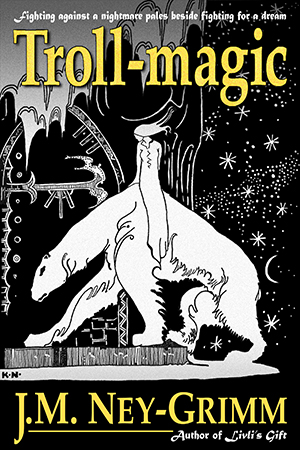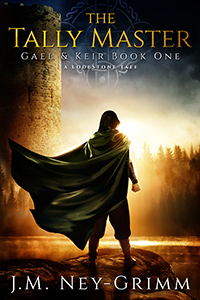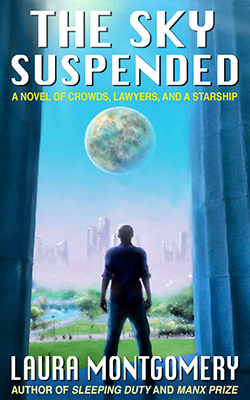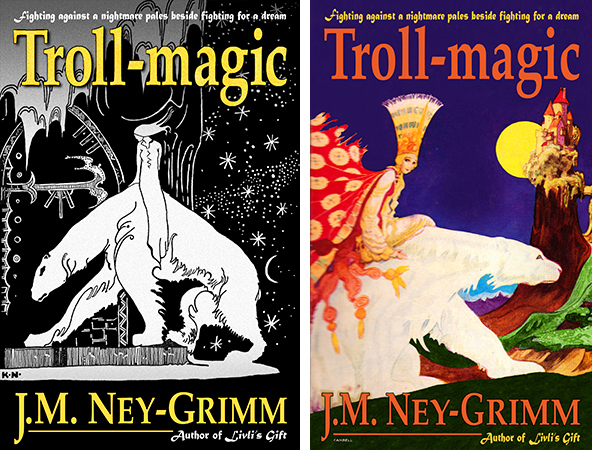When I attended a publishing workshop last summer, my teacher said that the writer was usually the last person to know what genre he or she was writing. I laughed along with everyone else in the class, and filed that tidbit away as largely irrelevant to me. After all, I write fantasy. How could I be wrong about that?

Wondrous setting? Check.
Fantastical creatures? Check.
Characters possessing extravagant powers? Check.
Fantasy. Yes.
Then I remembered my struggle when I released my second ebook, Troll-magic, on Amazon’s Kindle Direct Publishing program. I needed to specify my story’s “category,” and the options bewildered me. I could select “fantasy & magic” under the broader category of “juvenile fiction.”
 Or I had options from six categories under “fiction, fantasy”:
Or I had options from six categories under “fiction, fantasy”:
• general
• collections & anthologies
• dark fantasy
• epic
• historical
• paranormal
• urban
Other e-tailers included “sword & sorcery” under the fantasy umbrella. And YA or young adult under the juvenile category.
But I hadn’t known which category to choose. I knew I shouldn’t chose “general.” The whole point of the categories is to help readers find the types of stories they prefer. “General” would do nothing toward that goal.
My novel was clearly not a collection or an anthology. So I could rule that one out.
Nor was it a dark fantasy. I hope my readers feel uplifted and inspired when they finish reading one of my stories, more able to tackle the challenges that confront most of us humans here on the planet. The mood of my works is, I hope, anything but dark and despairing. (I learned later that my idea of dark fantasy was not correct, but let’s not debate that right now, ‘kay? Actually all my ideas on genre were wrong, but we’ll leave that aside too! 😀 )
Epic? Isn’t that stuff like Lord of the Rings? Incredible quests across impossible terrain, big battle scenes, and the fate of a world in the balance? My story focused more intently on the fate of one person and her friends and family, although her actions do impact her greater community. But, not on an epic Middle-earthian scale.
Historical? Surely not. I wasn’t writing stories set in Tudor England or America’s pioneering west or any recognizable time period in our world. In fact, I wasn’t writing in our world at all. So, no. Not historical fantasy.
Paranormal? While some of my characters posessed magical powers which might be classified as “paranormal,” my heroine emphatically did not. She’s a musician trying to find a way to pursue her art.
Urban? Lorelin lives in a decidedly rural setting. Gabris, another POV character, lives in one of the biggest cities in my North-lands, but none of his scenes involve running through scary urban streets with bad guys after him. Nor is his city modern. It’s steam age.
Sword & sorcery? Well, there’s plenty of magic or “sorcery.” But no swords at all. And the only true battle is one of will and “troll-magic” versus “patterning” near the end.
 Young adult? I’m sure there are many older teens who enjoy my stories, but I’m really writing for adults. So, no.
Young adult? I’m sure there are many older teens who enjoy my stories, but I’m really writing for adults. So, no.
Do you see my problem? I’d ruled out all of my options!
I did some digging. Among all the authors whose work I love and read, whose stories do mine most resemble? I’d have to say Robin McKinley. So how are her books categorized on Amazon?
Well, Spindle’s End lists out like this:
• Books > Children’s Books > Fairy Tales, Folk Tales & Myths
• Books > Children’s Books > Literature & Fiction > Historical Fiction > Europe
• Books > Teen & Young Adult > Historical Fiction
• Kindle eBooks > Teen & Young Adult > Historical Fiction
• Kindle eBooks > Teen & Young Adult > Literature & Fiction
• Kindle eBooks > Teen & Young Adult > Science Fiction & Fantasy > Fantasy > Myths & Legends
O-oh! Oh!
Those results were not entirely self-explanatory to me, but they certainly gave me food for thought. Apparently I’d been defining category or genre too narrowly. Perhaps Troll-magic was paranormal fantasy. Or historical fantasy.
The more I thought about it, the more I saw that my book might fit in several categories: paranormal or historical under the fantasy umbrella. Or even literary or fairy tales-folk tales-myths under the larger fiction umbrella.
Historical fantasy seemed the closest fit. Apparently the “historical” meant anything in a setting with a technology level or cultural mood similar to that from a period of our own world’s history. It didn’t have to be an alternate history actually set in our world. So you might have medieval fantasy or prehistoric fantasy or steam age fantasy or Norse fantasy. And so on. In the end, I chose the categories of “fairy tales, folk tales & myths” and “historical fantasy.”
And I was wrong! Proving my workshop teacher to be utterly right. The writer is the last one to know!
So how was I wrong?
First the YA or young adult label. It does not mean what I thought it did. I thought it meant you were writing specifically for teens. Well, it can. But no. The relevant factor is: what age is your protagonist? If she is 16 or 17 or 18 years old, then you are writing YA.
Really? Yep. In fact, half the readers reading YA fiction are well out of their teens. Lorelin is 17. By definition, Troll-magic is YA. Who would have guessed it? Not me!
Indeed, the writer is the last one to know.
I went back to my Amazon KDP dashboard and made the categories for Troll-magic “juvenile fiction: fantasy & magic” and “historical fantasy.”
And, guess what? I was still wrong. Or half wrong.
The bottom line is that my workshop teacher had touched on a very real difficulty. Categorizing a book’s genre is hard. He suggested asking your readers which genre they thought your book was. They probably know. But you, the writer, don’t. And your readers may not volunteer the information. Go ask!
Did I put this excellent advice into action? Of course not, because now I thought I did know. I wrote historical fantasy and YA fantasy. So I selected those categories for all my stories with protagonists in the correct age range, and swapped out the YA category for “folk tales, etc.” when the protag was older or younger. Done.
How did I find out my mistake? I got lucky and a reader in my writer’s group called Troll-magic epic during the course of some writerly feedback about the book.
Hmm. Interesting.
Did that make me realize that Troll-magic was epic fantasy? Of course not. Like any writer, I’m dense about these things.
 I didn’t sit up and take notice until a reviewer called Sarvet’s Wanderyar epic fantasy. What?! Sarvet’s Wanderyar is epic fantasy? How can this be?
I didn’t sit up and take notice until a reviewer called Sarvet’s Wanderyar epic fantasy. What?! Sarvet’s Wanderyar is epic fantasy? How can this be?
Finally, I turned my analytic brain on.
Sarvet does, in effect, go on a quest. It’s personal, but a quest nonetheless. Her journey does not cover vast distances or varied terrain, but it does involve a profound transformation of scene: from her grand-but-prosaic mountain milieu to the fantastical plane of the pegasi. And finally, her heroic actions profoundly change her culture, the insular world of the Hammarleedings.
All the elements of epic fantasy were present, and I never saw it.
The key facets of epic fantasy are not miles traveled, battles fought, or the size of the “world” transformed. Epic fantasy is characterized by the stature of its characters or the scope of its themes. I am drawn to stories of profound transformation, impossible odds, and numinous wonder. I like a close, very personal focus, but consequences both deep and far-flung. My ultimate scope is large, epic, if you will.
Did I go change all my books’ categories?
I’m working on it. On the e-tailers that permit three categories for each story, I’m good. Because I am writing historical fantasy. It’s just that epic fantasy is an even better descriptor. Ideally, I would categorize all my stories as epic fantasy, historical fantasy, fairy tale, and (for about half) YA fantasy. That would give all my potential readers the best chance of finding my books.
But most e-tailers permit only two categories. For the non-YA titles, I can use epic and historical. But for the YA titles – and there are a ton of YA readers, so I don’t want to skip the YA moniker – I have to chose either epic or historical. It’s a judgment call which is better. Some of my stories fall on one side of the divide, some on the other.
And, as we probably all know by now, my judgment is likely wrong! So readers, if you have an opinion on the matter, I’m all ears. 😀
For more thoughts on communication between writers and readers, see:
Eyes Glaze Over? Never!
Cover Design Primer









